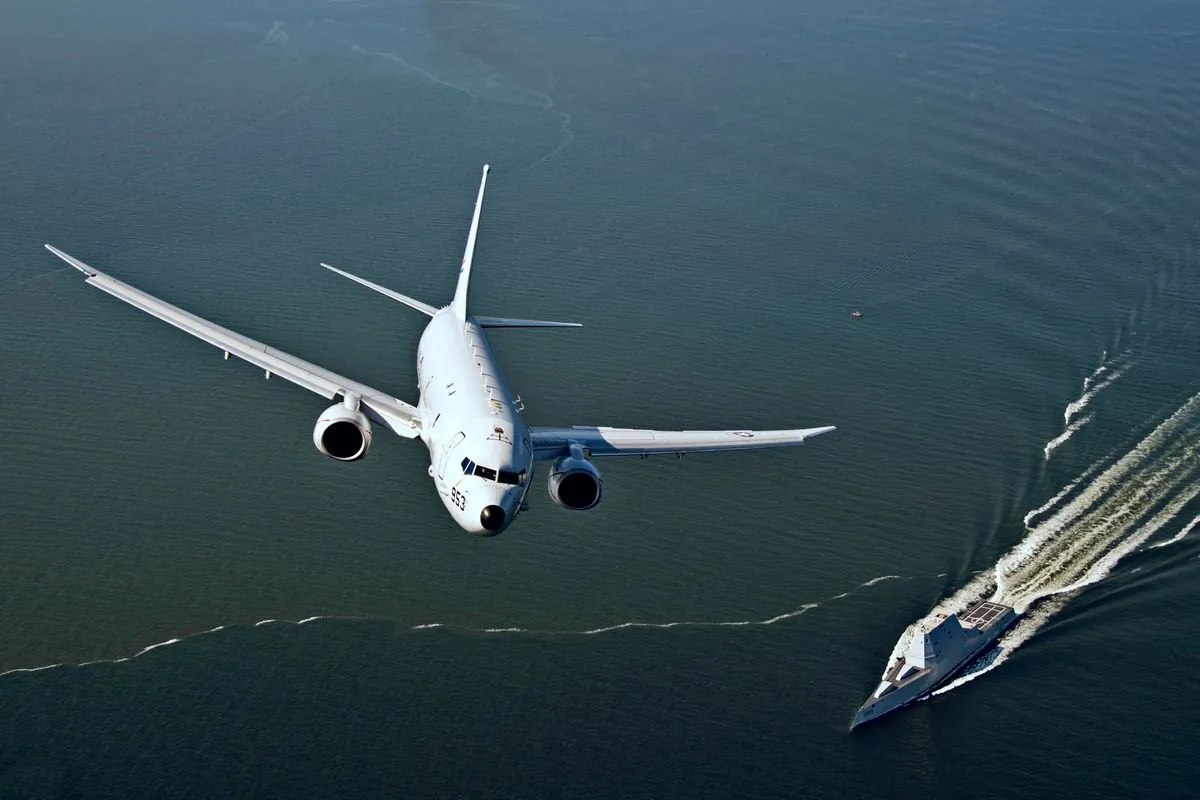Chinese Military Monitors U.S. Aircraft in Taiwan Strait Flyover
Chinese warplanes tracked a U.S. P-8A Poseidon aircraft in the Taiwan Strait, escalating tensions. This incident follows a recent German naval presence in the area, highlighting ongoing regional disputes.

On September 10, 2024, Chinese military forces monitored a U.S. P-8A Poseidon aircraft as it traversed the Taiwan Strait, a 180 km wide waterway separating mainland China from Taiwan. This event marks the latest in a series of incidents highlighting the ongoing tensions in the region.
Li Xi, a senior colonel and spokesperson for the People's Liberation Army's Eastern Theater Command, stated that Chinese warplanes were dispatched to "tail and monitor" the U.S. aircraft's flight. The P-8A Poseidon, a long-range patrol and reconnaissance plane based on the Boeing 737-800, is known for its anti-submarine warfare capabilities and can carry various weapons, including torpedoes and anti-ship missiles.

The Taiwan Strait, an important international shipping route connecting the South China Sea to the East China Sea, has been a focal point of geopolitical tension. China claims Taiwan, officially known as the Republic of China (ROC), as its own territory under its "One China" policy, despite the island's self-governance since 1949.
This incident follows a significant event just four days earlier, when Germany sailed two warships through the Taiwan Strait on September 6, 2024. This marked Germany's first such transit in over two decades, with their previous passage occurring in 2002. The Chinese government expressed criticism of this action, viewing it as a challenge to its territorial claims.
The U.S. Navy, which operates in the area under the 7th Fleet, did not immediately comment on the recent incident. The U.S. relationship with Taiwan is governed by the Taiwan Relations Act of 1979, which allows for defensive support while maintaining strategic ambiguity.
These events occur against a backdrop of increased Chinese military exercises near Taiwan in recent years. The concept of "Freedom of Navigation" is often cited by nations conducting operations in the Taiwan Strait, while China maintains its stance on safeguarding what it considers its sovereign territory.
It's worth noting that tensions in this region have a historical precedent. On April 1, 2001, over 23 years ago, a U.S. surveillance plane and a Chinese navy fighter collided mid-air near the Chinese island province of Hainan, resulting in the Chinese pilot's death. This incident, known as the Hainan Island incident, led to a diplomatic standoff between the two nations.
As the situation continues to evolve, the international community watches closely. The Taiwan Strait remains a critical area where the interests of multiple nations intersect, underscoring the complex nature of East Asian geopolitics.
"Theater command troops will remain on constant high alert and resolutely safeguard national sovereignty and security as well as regional peace and stability."
This statement reflects China's firm stance on its territorial claims and its commitment to maintaining a strong military presence in the region. As nations continue to navigate these sensitive waters, both literally and figuratively, the potential for further incidents remains a concern for regional stability and international relations.


































